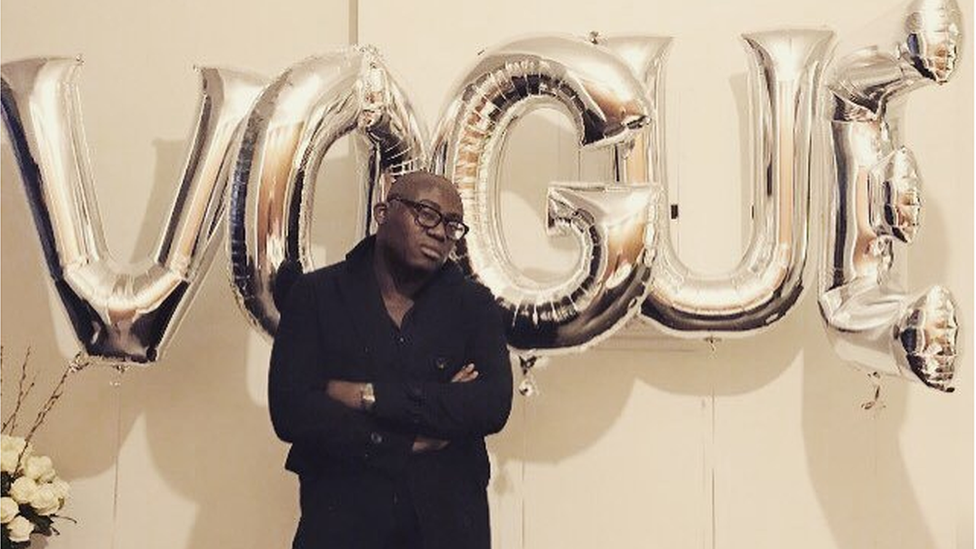Men's Fashion Week: How Tinie Tempah went from charts to catwalks
- Published

It's not often you get to interview one of the UK's most successful musicians in a west London bathroom.
But with just days to go until Tinie Tempah's catwalk show for London Fashion Week Men's (LFWM), there's limited space at rehearsals.
Packed clothes racks and paper sketches fill the top floor room of the 29-year-old's studio in Holland Park, as models mill around trying on their outfits.
There's so much going on that the easiest (and quietest) place to conduct an interview turns out to be a small washroom, where we take shelter to discuss Tinie's latest collection for his clothing label, What We Wear.
The musician unveiled his first collection for the brand last year, but he has been an ambassador for LFWM since its launch in 2012 - a period he thinks was pivotal for men's fashion.
"I think 2010, 2011, there was a lot of press about how British men were becoming more fashionable. 'Metrosexual' was the term being used around the time," he tells the BBC.

Tinie debuted his first collection at London Fashion Week Men's last year
"Since then, more men have been paying attention to their fashion. To be honest, I still think there's a lot more women paying attention to what they wear, how they wear it, how it looks, who the designer is.
"But we're started to seeing a new generation of young people who are very savvy, more into their brands."
Since his huge breakthrough single Pass Out, external in 2010, fashion has been a crucial part of Tinie's public image.
His sharp sense of style led to him being named the UK's best dressed man in 2012 by GQ (he also appears in the top 20 of this year's list, external).
"I think there's more fashion in music than people realise," says Tinie, whose real name is Patrick Okogwu.
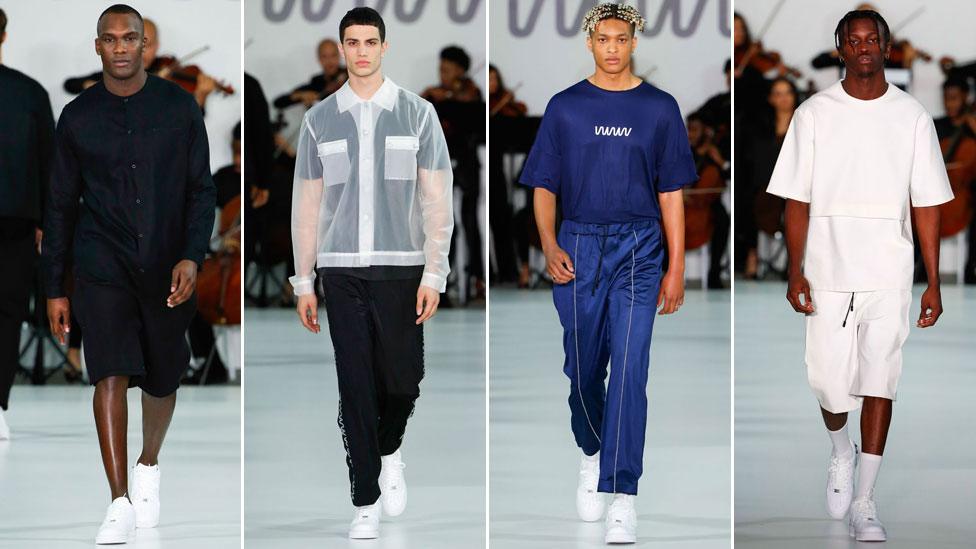
Tinie Tempah's first What We Wear collection debuted last year
"Most people who are shooting music videos, they're styled to some degree, there's some thought about what they're wearing, how their hair is styled. All of that, to me, is fashion.
"Even a fashion show itself wouldn't be right if there wasn't any music. I think there's a really close relationship between the two."
So, when London Collections: Men (later renamed to London Fashion Week Men's) first launched in 2012, Tinie was an obvious choice for ambassador.
But his enthusiasm for fashion dates back beyond his music career.
"I'd say it was from about nine or 10. I come from a Nigerian immigrant background, my parents had us here, and my Mum, on top of having three or four jobs, she always believed in having a side hustle, and one of those was actually going and buying fabric," Tinie explains.
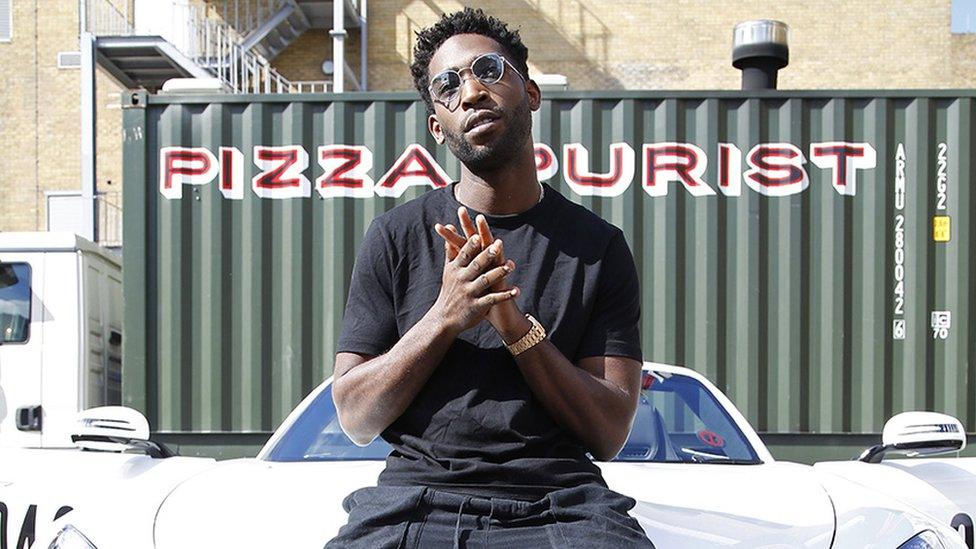
"She'd go over to Switzerland or Italy, bring it back and sell it to other women from the local community.
"In Nigerian culture, a lot of the women like to make their own dresses and wear them to weddings, so she'd buy all these different materials, and once in a while she'd let me go with her.
"From there, I started to understand and have a bit of a passion and knowledge for fashion and textiles in general."
Tinie's enthusiasm eventually encouraged to him become a prominent figure in the fashion circuit, working closely with the British Fashion Council.
"I remember just saying to myself one day, 'I can't come to another Men's Fashion Week for the sixth year running, being this guy that knows fashion, being this guy that's a clothes horse for most of these designers, and not make a contribution myself,'" he recalls.
"So while I was making my third album, Youth, it was a challenge for me to see if I could make a first solid collection as well as an album at the same time."
Allow YouTube content?
This article contains content provided by Google YouTube. We ask for your permission before anything is loaded, as they may be using cookies and other technologies. You may want to read Google’s cookie policy, external and privacy policy, external before accepting. To view this content choose ‘accept and continue’.
He admits it's "definitely not easy" to juggle music and fashion but his chart presence doesn't seem to have been affected by his commitment to clothing.
Last year, his third album Youth charted in the top 10 (as both his previous albums did), and spawned the massive singles Girls Like, external, a collaboration with Zara Larsson, and his number one duet with Jess Glynne, Not Letting Go, external.
"I want to be one of those people to challenge the idea that you can only do one thing," Tinie says.
"In future generations I think people are going to be way more multi-faceted, and it's not going to be such a surprise for someone to rap and make clothes."
Compared to most big-name brands, the What We Wear range is reasonably priced, but a jacket or pair of jeans will still cost you more than you'd pay in an average high street retailer.
But, he says: "For me, I like the durability of something. I want it to last.

Sadly the What We Wear-branded car doesn't come with the clothes
"Over time, I've made the same choices as, I'm guessing, most men in Britain. Sometimes I spend loads of money on a piece of clothing, sometimes very little.
"But when you buy something that isn't of any real quality, it doesn't last long, you don't get that many wears out of it.
"So you can spend £14 to buy jeans every couple of months, or spend £140 and maybe buy a pair of jeans that'll last you 10 years. For me, the latter makes a lot more sense."
But, he adds, one of the issues with being a designer is that, if you hit upon a new trend, other designers immediately begin to mimic you.
It's one of the reasons Tinie wants his label to emulate the "see now, buy now" model, which means collections are available to buy as soon as they've debuted on the catwalk, rather than going on sale the following season.
"If you can't access something you've seen for three months, it goes completely out of your memory.
"For that reason I want to be able to get to that stage where we can comfortably afford to do 'see now, buy now,'" he says.
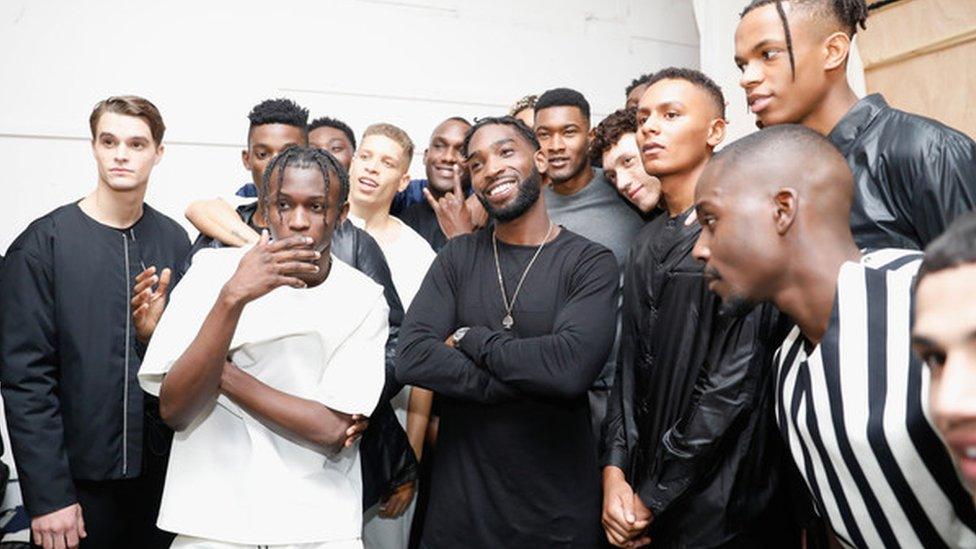
Tinie with some of his catwalk models backstage at last January's LFWM
"And the other reason I want to do it is some other people start taking my ideas," he laughs.
"Once you start showing your stuff ahead of time, what I've realised is, you show it, then six months down the line when you're ready to release it, you go into a high street retailer, and there's already a similar design."
It's notable that Tinie didn't name the clothing label after his stage name.
Was that a deliberate move to make sure the brand survives on its own merit?
"A million per cent," he says. "What We Wear is exactly what it is. I felt there was a gap for a contemporary menswear brand that reflects what the modern man is wearing today.
"There was the whole idea of associating my name with it but to be honest... I didn't want anyone to think I was using my name.
"I wanted to build something from scratch so that, regardless of Tinie Tempah, long after I'm gone, I wanted to be able to stand amongst brands that have been around for a hundred years."
Tinie Tempah will show his Autumn/Winter collection at 14:00 GMT on Saturday as part of London Fashion Week Men's.

Follow us on Facebook, external, on Twitter @BBCNewsEnts, external, or on Instagram at bbcnewsents, external. If you have a story suggestion email entertainment.news@bbc.co.uk, external.
- Published25 December 2017
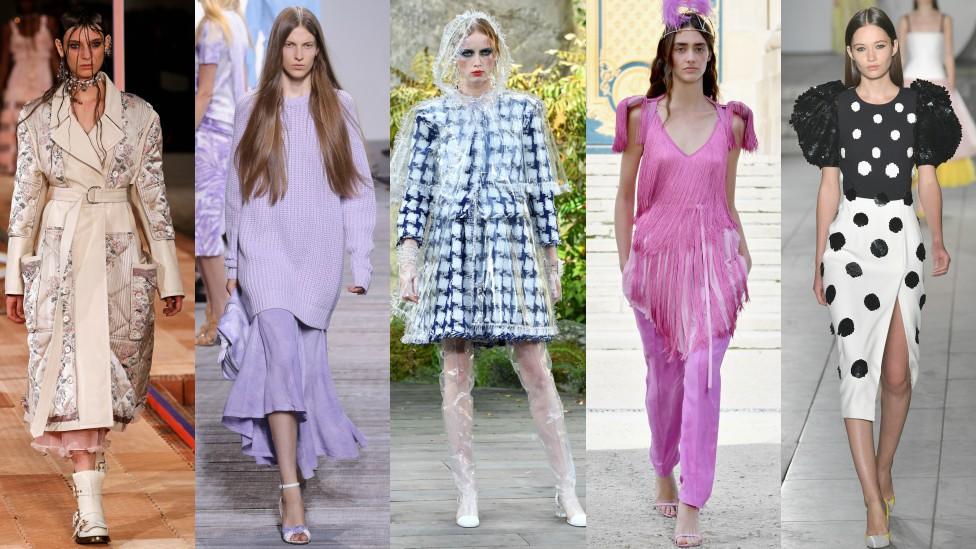
- Published16 February 2017
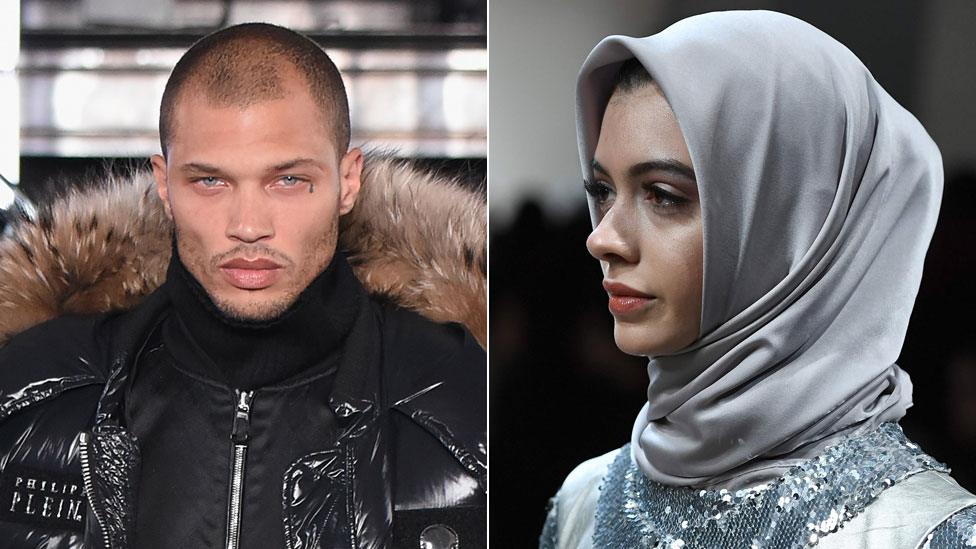
- Published1 August 2017
